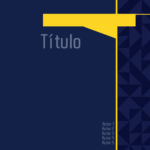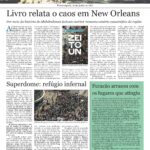The Baroque movement was an artistic and cultural wave that emerged in Europe in the early 17th century, lasting until the mid-18th century. Originating in Italy, the Baroque style quickly spread across the continent, influencing countries like France, Spain, and the Netherlands.
Characterized by its grandeur, drama, and emotional intensity, the Baroque movement aimed to captivate and inspire awe. It often reflected the power and authority of the Catholic Church during the Counter-Reformation, using art as a way to communicate religious themes and evoke spiritual fervor. At the same time, it also mirrored the political strength of monarchies, who used Baroque art to project their dominance and wealth.
Key figures in the Baroque movement included painters like Caravaggio, Rembrandt, Peter Paul Rubens, and Diego Velázquez. In music, composers like Johann Sebastian Bach and Antonio Vivaldi embodied the Baroque spirit, while architects such as Gian Lorenzo Bernini and Francesco Borromini reshaped European cities with bold, elaborate designs.
The Baroque period peaked between 1600 and 1750, laying the foundation for future art movements by pushing the boundaries of emotion, perspective, and form.
Baroque in Painting
Baroque painting is best known for its dramatic use of light and shadow, known as chiaroscuro, along with intense realism and emotional depth. Artists sought to create a sense of movement and energy within their works, often using bold colors, strong contrasts, and complex compositions.
- Caravaggio is often hailed as the father of Baroque painting, famous for his raw, emotional depictions of biblical scenes and his masterful use of light. His work, like The Calling of Saint Matthew, draws viewers into the moment with stunning realism.
- Peter Paul Rubens brought a more dynamic, sensual style to Baroque painting, filling his canvases with swirling figures, rich colors, and mythological themes, as seen in The Descent from the Cross.
- Rembrandt infused his portraits and religious scenes with an unparalleled psychological depth, making works like The Night Watch stand out for their human drama and masterful light effects.
Overall, Baroque painting was less about calm, balanced compositions and more about stirring the soul with intensity, movement, and grandeur.
Baroque in Music
The Baroque period also revolutionized music, giving rise to new forms and instruments, as well as a deeper exploration of emotional expression.
- Johann Sebastian Bach is arguably the most famous Baroque composer, known for his intricate fugues, oratorios, and cantatas. His work, like Brandenburg Concertos, showcases the complexity and ornamentation typical of Baroque music.
- Antonio Vivaldi brought vivid imagery and dynamism to his compositions, with The Four Seasons offering a perfect example of music that reflects the movement’s love for drama and storytelling.
- George Frideric Handel blended the grandeur of Baroque music with accessible, memorable melodies, especially in his famous oratorio Messiah.
Baroque music often featured contrasts in dynamics (loud vs. soft), layered textures, and elaborate ornamentation, reflecting the era’s love for drama and intensity.
Baroque in Fashion
Baroque fashion was as opulent and extravagant as its art and music. Clothing emphasized luxury, with rich fabrics, bold patterns, and intricate embroidery.
- For women: Gowns featured voluminous skirts, often supported by hoops or panniers, and were made from materials like silk, velvet, and lace. Accessories included pearl necklaces, feathered hats, and elaborate hairstyles.
- For men: The period saw the rise of the “justaucorps” (a long, fitted coat), paired with breeches, lace cravats, and wigs. Gold and silver threadwork, as well as flamboyant colors, showcased wealth and status.
Fashion during the Baroque era was not just about looking beautiful — it was about making a statement of power, prestige, and grandeur.
Baroque in Architecture
Baroque architecture broke free from the rigid symmetry of the Renaissance, embracing movement, bold ornamentation, and dramatic use of space.
- Gian Lorenzo Bernini was a central figure, blending sculpture and architecture to create awe-inspiring works like the Baldachin of St. Peter’s Basilica in Rome — a towering, twisting bronze canopy designed to inspire wonder.
- Francesco Borromini pushed the boundaries of form, with curving facades and dynamic interiors, as seen in San Carlo alle Quattro Fontane.
- Versailles Palace in France, under the reign of Louis XIV, epitomized Baroque architecture with its grand halls, lavish gardens, and gold-covered details.
Baroque architecture aimed to dazzle, using light, shadow, and intricate ornamentation to create a sense of divine magnificence.
Baroque in Literature
Baroque literature paralleled the movement’s artistic trends, embracing complexity, symbolism, and emotional intensity.
- John Milton’s Paradise Lost is a prime example of Baroque literature, blending epic storytelling with philosophical depth and vivid imagery.
- Luis de Góngora in Spain pioneered a style known as culteranismo, which favored elaborate metaphors and ornate language.
- Pedro Calderón de la Barca explored religious and existential themes in his plays, like Life is a Dream, reflecting the era’s interest in both spirituality and human emotion.
Writers of the Baroque period often wrestled with ideas of mortality, faith, and beauty, using elaborate language and dramatic contrasts to mirror the movement’s larger artistic goals.
The movement was more than just an art style — it was a full-blown cultural revolution that touched every aspect of life, from painting and music to fashion and architecture. It celebrated grandeur, emotional intensity, and sensory overload, serving both religious and political agendas while inspiring awe and devotion.
Even today, the echoes of Baroque art can be seen in modern design, music, and literature. Its boldness and emotional resonance remind us of the power of art to move, challenge, and captivate the human spirit.






1 comentário em “2025InArt #02 – Baroque”